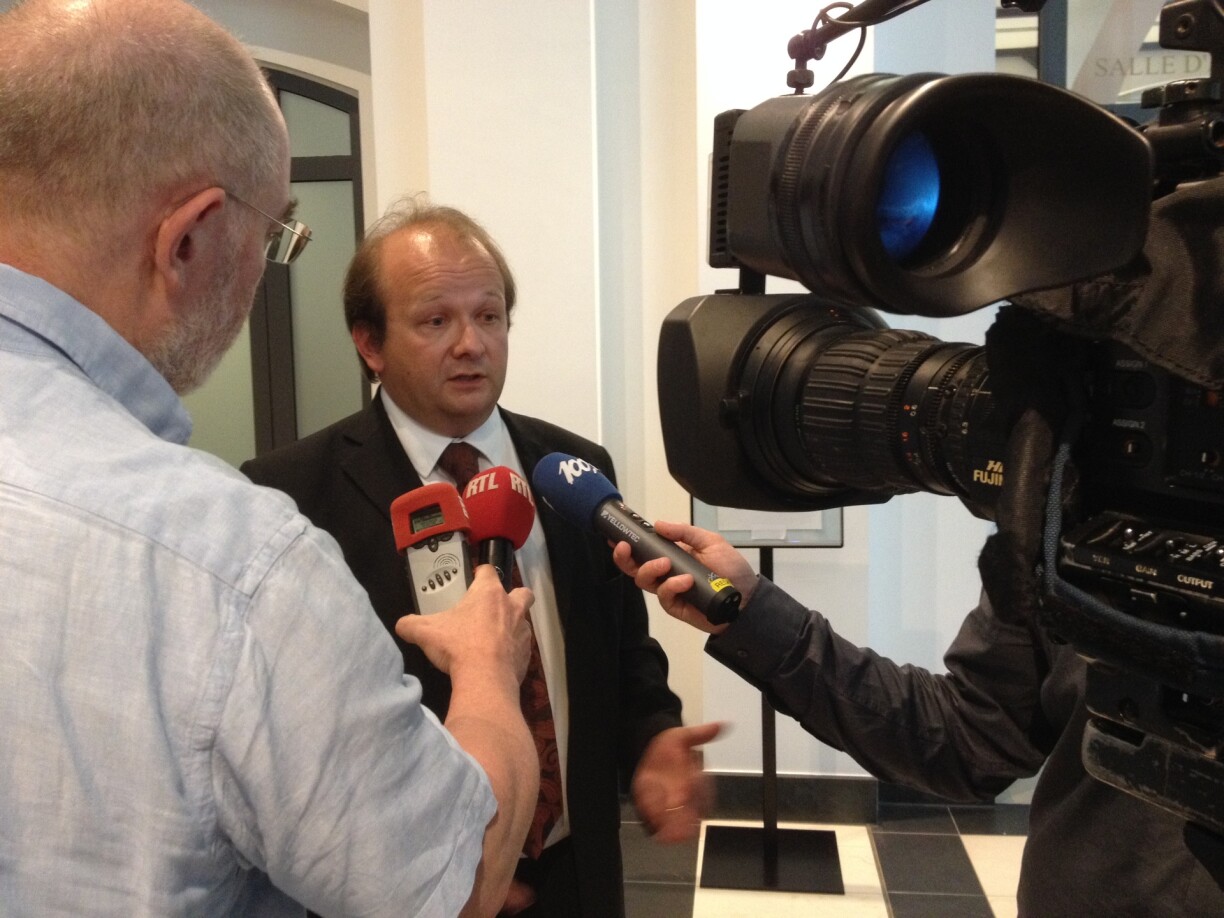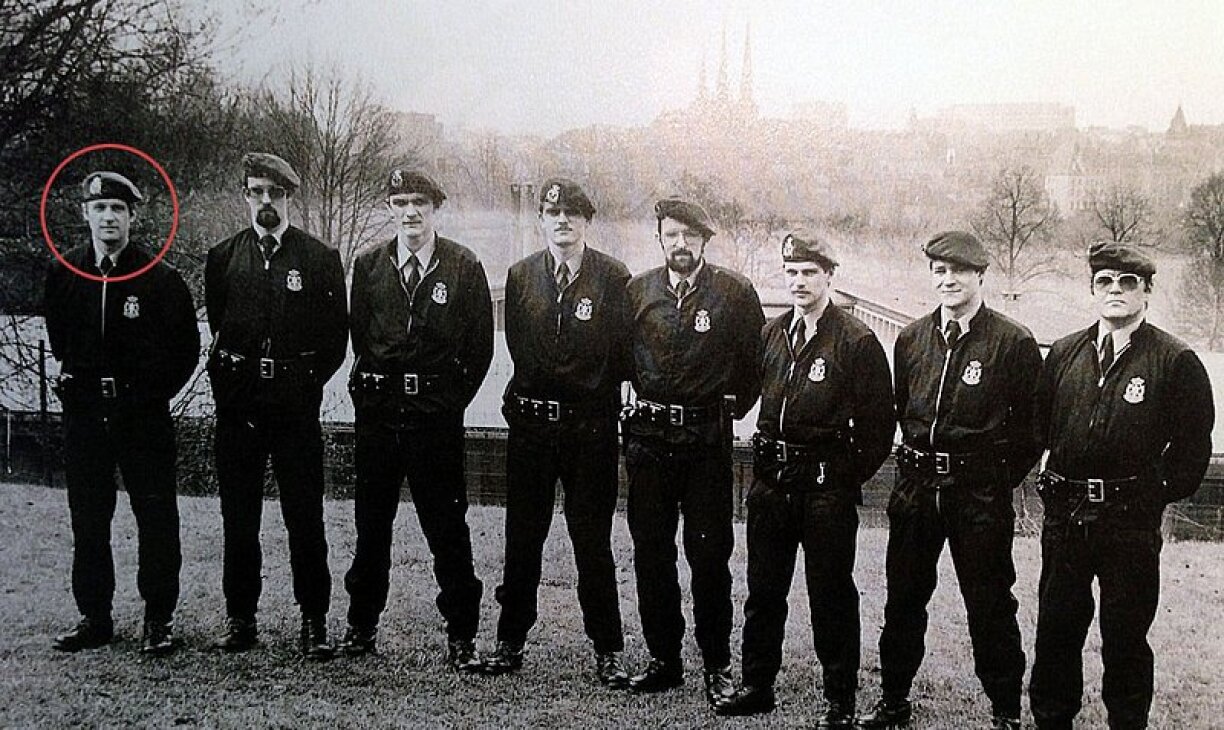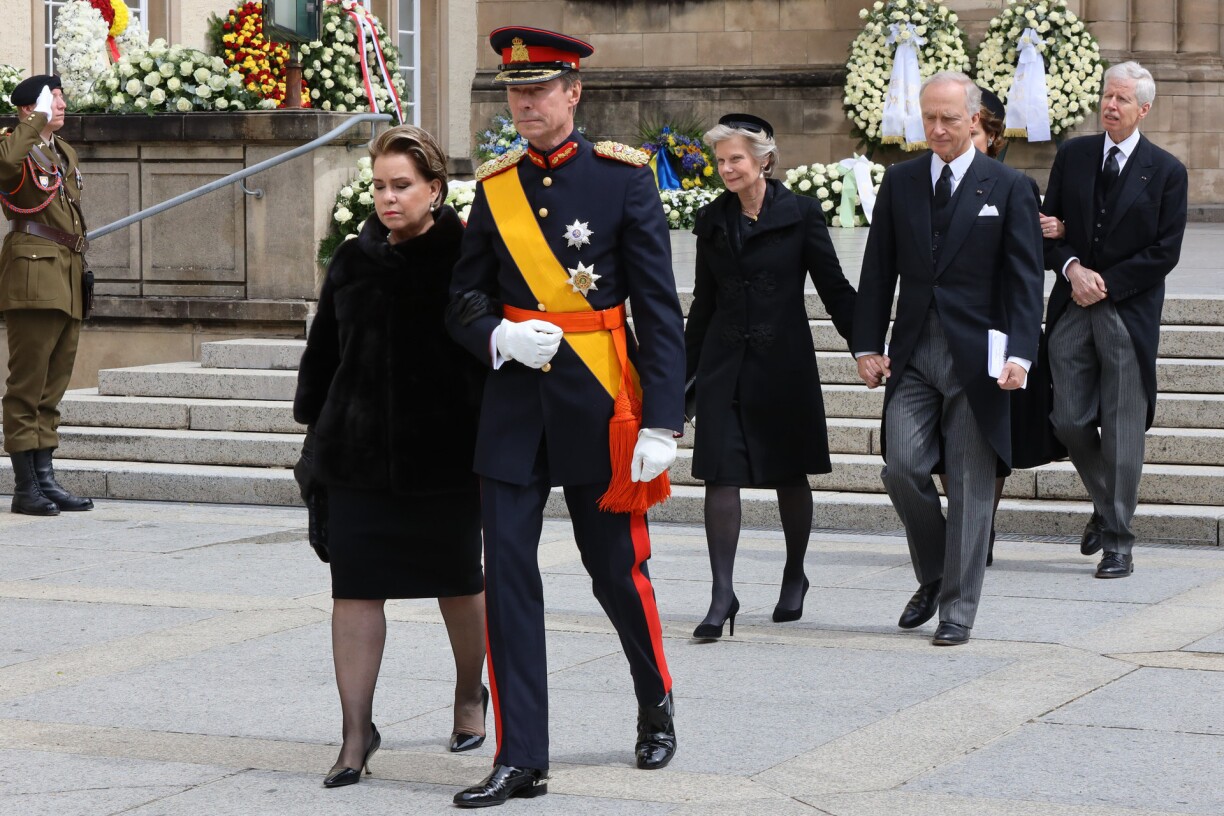
Last week we covered the events of the Bommeleeër in chronological order. In this episode we’ll try to answer the questions of who could have been behind this string of attacks? And how is it possible that to this day there is little new information?
Part 2 of our two-part series into this unbelievable case, covering some of the investigations so far.
To understand the Bommeleeër better it is important to have a picture of the country’s political situation in the 1980s.
From 1984, the country was run by a CSV and LSAP coalition. This was a moment in the Grand Duchy’s history when Luxembourg’s steel industry was going through a rough period. Globally, the steel market was experiencing a major collapse due to overproduction, increasing competition from Asia, as well as companies lacking modernisation.
In 1985, Luxembourg was facing national security and policing issues, and the Grand Ducal Police were struggling to keep the country safe, especially given the events that were on the agenda. In May of 1985, Pope Jean Paul II visited the Grand Duchy, in June the Schengen Agreement was signed, and between July and December of 1985 Luxembourg took on the European Presidency.
These are events of great international importance, and anyone who would want to harm a country’s reputation would have done so in a time when it was in the global spotlight.
Then, on top of all of this, the cold war dominated the international sphere, with a lot of NATO forces being flown into Luxembourg from America. More precisely, two decades earlier, the NATO Maintenance and Supply Agency (NAMSA) was established in Capellen, thus bringing in lots of expat workers.
The prime target of most early bombings were the electricity pylons belonging to Cegedel, the national electricity provider. It remains unclear why these pylons were blown up, or whether the attacks were directed at Cegedel.
It may have been an attempt to destabilise the country and its economy. As all homes are dependent on electricity, blowing up pylons on key networks could put the government into a very uncomfortable position very quickly.
There has never been much of a breakthrough as to why Cegedel was targeted.
The first part of the trial began in 2013, 30 years after the bombings, and focused mainly on two men: Marc Scheer and Joseph Wilmes, two officers of the Mobile Brigade of the Gendarmerie, an anti-terror unit.
The unit consisted of 12 highly trained, special police officers – an anti-terror unit that could be compared to a small SWAT Team, GSG9 or EKO COBRA. The man behind the unit was Ben Geiben from the secret service, who founded it in 1979 and ran the brigade until 1982, shortly before the attacks began.
A prominent theory was that of underfunding. Despite its importance, the Mobile Brigade lacked cash, and thus some believed members of the brigade orchestrated the attacks themselves to stir up some chaos, hoping more money would be pumped into the department.
Ben Geiben, or as Luxemburger Wort called him, the “super cop”, was at the centre of the investigation. Geiben entered the army in 1971, and within seven years was tasked by the Minister of the Army to set up the Mobile Brigade. He trained a lot abroad but found it difficult to implement the techniques at home with Luxembourgish resources.
At the time of his departure in 1982, his final report stated that he regretted the lack of resources and was worried about the future of the brigade. Geiben identified as homosexual, and this may have been the real reason why he left the army, as at the time it did not sit well with officials or army colleagues. He was just out of a divorce with his wife and had a relationship with his ex-wife’s brother.
There is a strong belief that Geiben’s insider knowledge, observational skills and information about the locations where attacks took place may have meant he played a key role in the bombings, and more importantly, the incredibly smart responses by the terrorists.

The bombers were always one step ahead.
Could Geiben have written the letters, or have been part of a group of people that led the attacks? Did he hate the police and government, because he did not receive the necessary resources for the Brigade Mobile? In court, Geiben always said he was never involved and found it outrageous for people to even think about accusing him.
Meanwhile, Wilmes first attracted attention on 15 November 2005, several days after Scheer told investigators that the two men spotted around Findel airport when the radar equipment was blown up were most likely him and Wilmes on patrol around the airport. But charges against the two men were dropped two years later due to insufficient evidence.
There is another theory, involving undercover operatives from a NATO-led forces group. This network was known as Stay Behind.
During the cold war, NATO, the CIA and the British Secret Intelligence Service (MI6) helped create clandestine stay-behind networks in many European countries, composed of secret operatives that would be placed undercover behind enemy lines in the event that a country would be attacked by Russia.
These operatives were run by national intelligence services and could be activated at a moment’s notice, specialised in spreading disinformation and political provocation. They would also be able to blow up infrastructure should enemy incursions take place and they’d have to block key routes. These Stay Behind agents indeed existed in Luxembourg, as Prime Minister Jaques Santer publicly acknowledged in the 1990s. Roughly 12 agents were present in Luxembourg between the 1950s and 1990s.
In the research article “Eyes on target: ‘Stay-behind’ forces during the Cold War”, author Tamir Sinai provides more insight into the weaponry and equipment these secret operatives were able to use. Hidden weapon caches were found in numerous countries. One cache, found in Western Berlin, buried in the Grunewald forest, included 9mm pistols, ammunition, knives, navigation equipment, a spy radio, various manuals, a flask of brandy, sweets and a guerrilla warfare manual.
Two ex-Stay Behind members were called to testify, Jean Wetz and Daniel Schenten. Wetz declared to have been a member of the secret organization from beginning to end; he was been trained as a radio operator. Exercises were rare, and he had no knowledge of other activities such as sabotage or a ceasefire in the country. Schenten had said to have been active for 3–4 years and also to have been trained in the in- and exfiltration of people. He would have been involved in exercises at night and would never have attended training courses. He also knew nothing of sabotage in the country and would not have known any other member of the network.
But even though Russia’s dominance was still ongoing, there was no sign (at least, not publicly visible) of a possible invasion or foreign threat. Could the Stay-behind forces have initiated the explosions? But who from NATO would want to attack Luxembourg?
Related to the secret service theory was a German secret service agent based in Munich, who had told his son that he was responsible for the attacks in Luxembourg and had written at least three of the ransom notes himself in the 1980s.
The son, Andreas Kramer, now a historian, was called into the court and told his story. He had explained that he had not stepped forward earlier because his father had threatened to murder his own family should they share the secret.
But his testimony was vague, as on day two of the hearing Kramer said that his father didn’t even speak English. Moreover, his sister and ex-wife said that Kramer was a professional liar, and rarely spoke the truth. We don’t actually know who they are referring to here, whether that’s the son or father.
Somewhere in the criminal file is the testimony of a man who claims to have “recognised” the Bommeleeër after the attack at the airport. The testimony was ignored for a long time, but an RTL report in 2005 brought the anonymous witness forward, who, according to him, was in “possession of extremely sensitive information” that he was only willing to share with one person: Prime Minister Jean Claude Juncker.
For days, the country was captivated by what the witness may have told the PM, but not before long local media got ahold of the juicy details.
The man was called Eugene Beffort. He said that on that evening of the explosion around Findel airport, at 10pm, he saw Prince Jean sitting in a car 450 metres away from where the bomb exploded. Beffort reported the car and its licence plate to police. The Bommeleeër, Beffort told Juncker, must be Prince Jean, the second son of Grand Duke Jean, and the brother of Grand Duke Henri.
In court, Beffort further told prosecutors that shortly after the attack, two policemen came to his house threatening him to never reveal to anyone again that he had seen Prince Jean near the airport during the night prior to the bombings; otherwise it would have dire consequences for him.
But of course being a prince means that everything you do is documented, and indeed, the prince had an alibi. On 9 November, the day of the Findel attack, Prince Jean was out hunting in Loir-et-Cher with the son of ex-French president Valerie Giscard d’Estaing. There are pictures and there’s also a signed hunting book. Beffort died in 2012.

On 9 December 2005, Prince Jean was scheduled to give a statement to police, but about one week earlier, state prosecutor Robert Biever met up with the royal member in advance for an informal discussion. Nobody knows what was discussed.
To make matters worse, Biever said that two-thirds of the evidence taken from all the different attacks, as well as letters and papers, were gone, no longer in the hands of the public prosecutor’s office.
This was a complete disaster, Biever acknowledged. The FBI and Bundeskriminalamt were asked by their Luxembourgish counterparts to help out and were given access to the files. The FBI was tasked with writing up two reports, a profile report on the Bommeleeër criminals, and one technical report. They were given to three ministers, but did not see the light of day for 17 years.
The court charged five former leaders of the Grand Ducal Gendarmerie with being accomplices in the attacks on the Court of Justice on 19 October 1985. Aloyse Harpes, Charles Bourg, Guy Stebens, Armand Schockweiler and Pierre Reuland.
They were slapped with numerous offenses, including attempted homicide, intentional assault and battery, arson, and breaking several laws on the distribution of electrical energy, using arms and ammunition as well as obstruction of justice with false testimonies. The indictment of the five co-perpetrators, or even accomplices, in the attacks was based on the observation that executing these acts was only made possible thanks to their protection, their advice and their direction.
Three former public security investigators were indicted for false testimony, which had argued that they saw Ben Geiben in Brussels: Paul Haan, Guillaume Büchler and Lucien Linden, as was former Brigade Mobile de la Gendarmerie officer Marcel Weydert.
After 176 sessions, the Bommeleeër trial was put on hold for the foreseeable future in June of 2014.
For obstruction of justice, the men could face five to ten years in prison, as well as fines of up to €75,000. False testimony under oath meanwhile is punishable by five to ten years in prison. But there has been no progress in the trial.
The Bommeleeër affair is widely regarded as a state affair that also indirectly led to the fall of the Juncker government in 2013. The government was forced to resign after a parliamentary inquiry published that year said that Luxembourg’s security agency illegally bugged politicians and members of the public, purchased cars for private use and took payments and favours in exchange for access to influential officials.
On top of this, Finance Minister Luc Frieden survived twin votes of no-confidence in parliament over accusations that he had put pressure on investigators to close their inquiry into the bombings.
Who are the Bommeleeër? We still do not know.
We would have to wait for the second part of the trial, which has not been announced yet, to understand what truly happened – should we ever find out.
In this series, RTL Today dives into a Luxembourgish crime case. Some are solved, others continue to baffle investigators until this day. This week’s story is a little different, but still involves the Grand Duchy – and crime. Find previous stories in our history section or here.